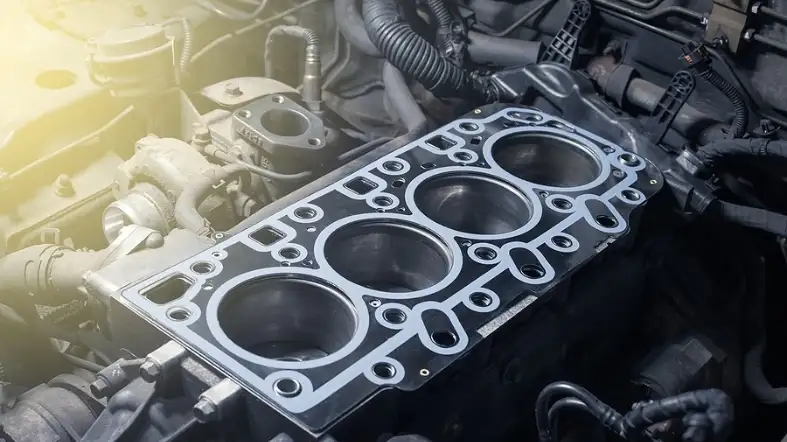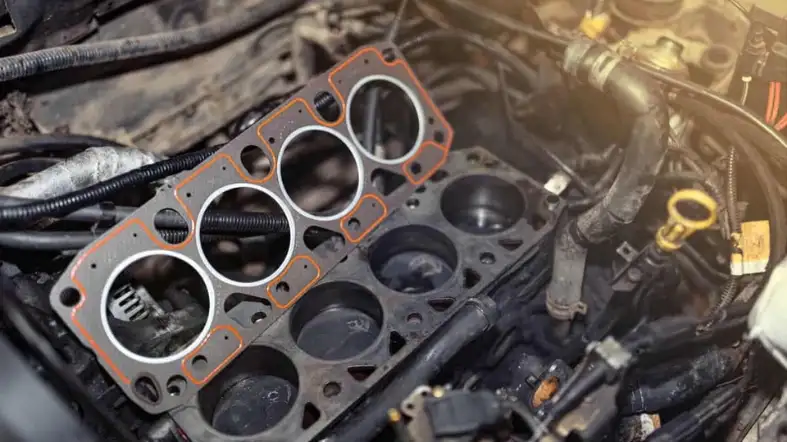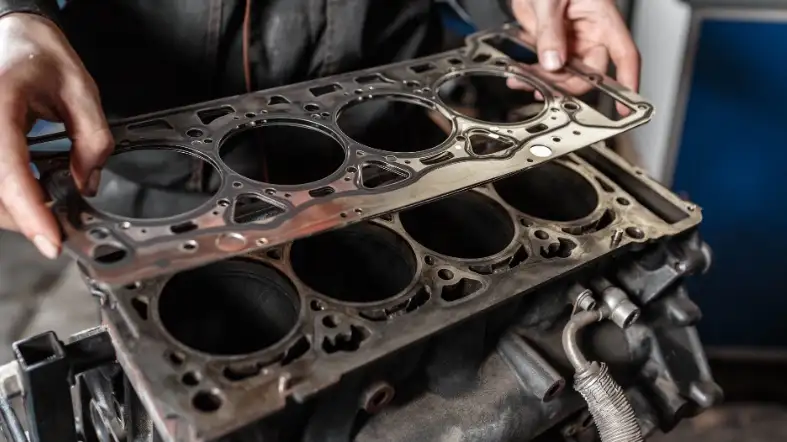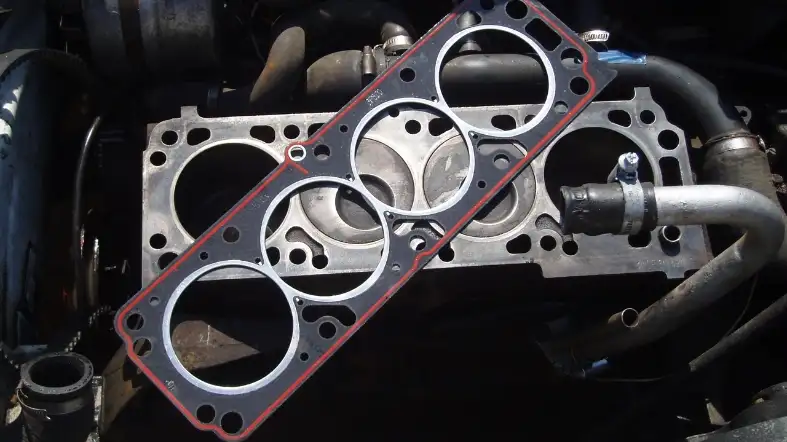Are you dealing with a blown head gasket and considering using a sealer as a quick fix?
While head gasket sealers can be a temporary solution, it’s important to know how long they’ll last.
The durability of head gasket sealers varies depending on several factors such as the brand, type of sealer, severity of the problem, and car usage.
In this blog post, we’ll discuss the lifespan of head gasket sealers, factors that affect their longevity, and alternative solutions to consider.

How Long Does Head Gasket Sealer Last?
Some head gasket sealers can last up to two years, while others may only last a few months. The quality of the product, severity of the damage, and driving conditions can all affect the lifespan of a head gasket sealer.
Can A Head Gasket Sealer Fix All Types Of Leaks?
Here are some examples to explain the effectiveness of head gasket sealers for different types of leaks:
Coolant leaks:
Head gasket sealer is effective at fixing coolant leaks.
It can seal cracks and gaps in the cylinder head, which is the most common cause of coolant leaks.
Oil leaks:
Head gasket sealer may not be effective at fixing oil leaks. Oil leaks can be caused by a variety of factors, including worn piston rings, valve cover gaskets, or main seals, which are not related to the head gasket.
In some cases, a head gasket sealer may temporarily fix an oil leak, but it is not a permanent solution.
Blown head gasket:
Head gasket sealer may be effective at fixing a blown head gasket, but it depends on the extent of the damage.
If you have a severely damaged head gasket it can’t give you a permanent solution.
However, for minor cracks and leaks, the head gasket sealer can provide a long-lasting solution.
Pros and cons of using head gasket sealer

Below are the pros and cons of using a head gasket sealer.
Pros: Cost-effective:
A head gasket sealer is a cost-effective solution compared to a head gasket repair.
You might need to spend $2,000 or more for a head gasket repair whereas a head gasket sealer may cost only around $45.
Easy to use:
Applying a head gasket sealer is an easy process. It involves pouring the substance into the radiator and running the vehicle for at least 15 minutes while keeping the heater and fan on high, as stated.
Temporary fix:
Head gasket sealers can serve as a temporary fix for minor cracks or leaks.
It can provide some extra time before a proper repair or replacement is necessary, as mentioned in.
Versatile:
Head gasket sealer is not just limited to fixing head gasket leaks. It can also help repair issues with hoses, valves, air ducts, water pumps, fuel filters, air conditioners, and other similar components, as stated in.
Cons:
Temporary fix:
While head gasket sealer can be a temporary fix, it is not a permanent solution.
As mentioned, it cannot fix a blown head gasket, and it can only create a tighter seal in case of minor cracks.
Not suitable for all engines:
Some engines may not be compatible with head gasket sealer, and using it could cause more damage than good, as mentioned in.
May cause clogging:
Head gasket sealer could clog the radiator or heater core, which could result in overheating or other engine issues, as stated in.
Damage to other systems:
Some head gasket sealers, like Bars-Leaks, may damage other systems in the process, such as clogging the heater core, as mentioned in.
Expensive permanent solutions:
While head gasket sealer can be a cost-effective temporary fix, permanent solutions can be expensive and could cost upwards of $100, as mentioned in.
How to apply head gasket sealer

Here are the steps to apply head gasket sealer:
Prepare the engine
Before applying the head gasket sealer, it is important to prepare the engine by draining the coolant and removing the thermostat.
The sealer will work more effectively on a clean and empty engine.
Pour the sealer into the radiator
Pour the head gasket sealer into the open radiator cap. You can usually simply pour the sealer into the radiator cap along with the coolant and water.
Read the instructions on the specific brand you purchased for instructions that may be unique to the type of head gasket sealer you chose.
Add coolant and water mixture
Blend a 50-50 distribution of coolant and water. Consult your owner’s manual to determine the best coolant to use for your car, and only add in small amounts at a time until you reach capacity.
Torque the head bolts
Torque the head bolts in three stages with at least 15 lb-ft between each pull. Finally, the order in which you torque the head fasteners is also important.
Start the engine
Start the engine, and turn on the heater to maximum heat and flow. Keep the engine RPMs at 1000 for at least 15 minutes.
You should add the head gasket sealer to the radiator for fast results whenever possible.
Factors that affect the lifespan of head gasket sealer
Here are the factors that affect the lifespan of head gasket sealer
Type of Sealer Used:
Each type of sealer has its own potential and drawbacks. So the lifespan of the sealer can depend on how well it is suited to the particular engine and the severity of the leak.
The severity of the Leak:
The lifespan of the head gasket sealer can also be affected by the severity of the leak. If the leak is small and the sealer is applied correctly, it may last for a long time.
However, if the leak is large or there are multiple leaks, the sealer may not be able to hold up for an extended period
Operating Conditions of the Engine:
The operating conditions of the engine can also affect the lifespan of the head gasket sealer.
Engines that are subject to high temperatures or heavy loads may put more stress on the sealer, causing it to break down more quickly.
Similarly, engines that are not properly maintained may have more problems with leaks and other issues that can reduce the lifespan of the sealer.
Quality of the Sealer:
Invest in higher-quality sealers. Because they may last longer and give better performance than lower-quality options.
How to know if the head gasket sealer is still effective

Here are some different ways to determine the effectiveness of a head gasket sealer.
Look for visible signs of leaks
One way to determine if the head gasket sealer is still effective is to check for any visible signs of leaks.
If you notice any coolant or oil leaks after using the sealer, then it may not be working properly anymore.
This could be an indication that the head gasket has further damage and needs to be replaced.
Check for engine misfires
If the head gasket sealer is no longer effective, it could cause engine misfires.
This is because the sealer may not be sealing the head gasket properly, which could lead to a loss of compression in the engine.
If you notice any misfires or lack of power in your engine, it could be an indication that the sealer is no longer effective.
Observe coolant and oil levels
Observe the Coolant level
Finally, observing the coolant and oil levels can help determine the effectiveness of a head gasket sealer.
If you notice that the coolant or oil levels are consistently decreasing, it could be an indication that the sealer is no longer effective.
This is because the sealer may not be preventing the leaks as intended.
Frequently Asked Questions
Can The Head Gasket Sealer Last Indefinitely?
No, the head gasket sealer is not a permanent solution and is not designed to last indefinitely.
It is a temporary fix that can help buy time before more extensive repairs are needed.
How Do I Know If The Head Gasket Sealer Is Still Effective?
If you notice that the symptoms of the leak have returned, such as engine overheating or loss of coolant, the head gasket sealer may no longer be effective.
How Does The Type Of Head Gasket Sealer Affect Its Lifespan?
Different types of head gasket sealers have different formulations and may have varying lifespans.
For example, some sealers have durable materials to last longer than others, but may also be more expensive.
Can Head Gasket Sealer Be Used As A Preventative Measure?
While head gasket sealer is not intended to be used as a preventative measure, some products may claim to offer such protection.
However, it is generally recommended to address any underlying issues with the engine before they become major problems.
When Should I Seek Professional Help For Head Gasket Issues?
If you have applied head gasket sealer and are still experiencing symptoms of a leak, or if the sealer has reached the end of its lifespan, it is recommended to seek professional help to diagnose and address the underlying issue with the engine.
Conclusion:
A head gasket sealer can be a convenient temporary fix for minor head gasket leaks, but it is not a permanent solution.
If you’re experiencing symptoms of a blown head gasket, it’s always best to address the underlying issue with the engine and seek professional help if necessary.
